- To date, 2021 has proved to be one of the most consequential years for Indigenous rights and participation in global climate and conservation efforts.
- In some parts of the world, Indigenous communities saw support for their rights increase, while in others, threats to their land rights by extractive industries continued unabated.
- To end the year, Mongabay rounds up the top 10 Indigenous news stories of 2021.
To date, 2021 has proved to be one of the most consequential years for Indigenous rights and participation in global climate and conservation efforts. As biodiversity loss mounted and urgency was added to mitigating climate change, Indigenous environmental stewardship was put centre-stage, conservation efforts continued to displace communities, and extractive industries resumed operations on ancestral lands.
Some of the world’s largest international conferences saw Indigenous issues and stewardship put under the spotlight. At the United Nations climate summit, known as COP26, Indigenous leaders pushed for Indigenous land rights as a climate mitigation solution. Philanthropists, investors and governments later pledged billions to the cause. As the Convention of Biological Diversity’s (CBD) released the first draft of the Post-2020 Global Biodiversity Framework, human rights groups heavily criticized and campaigned against one of its proposals to expand protected areas. Indigenous communities fear this new target will lead to the displacement of millions from their ancestral territories.
Across the globe, Indigenous peoples saw both support for their conservation efforts grow and were confronted with steep challenges to their land rights. To wrap up this year of highs and lows, Mongabay presents the top 10 Indigenous news stories from 2021.
1. ‘They will die’: Fears for the last Piripkura as Amazon invasion ramps up

According to a November dossier by the Coordination of Indigenous Organizations of the Brazilian Amazon (COIAB) and the Observatory for the Human Rights of Isolated and Recently Contacted Indigenous Peoples (OPI), outsiders are expanding cattle ranches into the territory of one of the world’s most vulnerable uncontacted Indigenous groups. Overflight images show that outsiders have invaded the protected Piripkura Indigenous Territory in the Brazilian Amazon, home to the last two known Piripkura individuals, Pakyî and Tamandua.
Deforestation inside the territory surged nearly a hundredfold in the 12 months since August 2020, which Indigenous rights activists attribute to anticipation among would-be invaders that a restriction ordinance banning outsiders won’t be renewed as it has every two years since 2008. The territory of 243,000 hectares (600,500 acres) is the most deforested of all the reserves occupied by uncontacted people.
The Piripkura suffered from at least two massacres since their first contact with outsiders in the 1980s, and now face the risk of extermination again, activists warn. To evade the invaders on their land, Pakyî and Tamandua have given up agriculture for hunting and gathering in order to increase their mobility and isolation in the territory.
2. Bornean communities locked into 2-million-hectare carbon deal they don’t know about
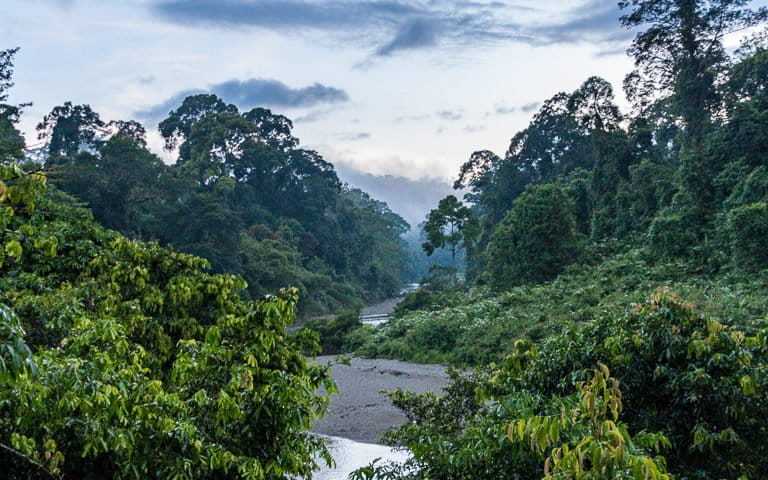
Leaders in Sabah, a Malaysian state on the island of Borneo, signed a nature conservation agreement on Oct. 28 with a group of foreign companies — apparently without the meaningful participation of Indigenous communities. The deal, brokered by an Australian consultancy called Tierra Australia and a private equity-backed funder in Singapore, is aimed at marketing carbon and other ecosystem services to companies looking, for example, to buy credits to offset their emissions. According to Peter Burgess, Tierra Australia’s CEO, the deal involves more than 2 million hectares (4.9 million acres) of forest, an area about the size of Slovenia, which would be restored and protected from mining, logging and industrial agriculture for the next 100-200 years.
However, Mongabay’s reporting revealed that communities living in and around these forests largely did not know about this agreement and were not consulted. Many civil society organizations hadn’t heard about the deal and criticize the lack of transparency involved in the agreement. According Burgess every “Indigenous person that needs to be consulted” was consulted.
This story was updated in Nov. 24, with new information by Indigenous and civil society groups, and the Deputy Chief Minister Jeffrey Kitingan. Read here.
3. Indigenous groups unveil plan to protect 80% of the Amazon in Peru and Ecuador

In response to what some Indigenous groups see as inadequate conservation goals, an alliance of Amazonian Indigenous organizations is proposing a plan to protect 80% of the Amazon in Peru and Ecuador by 2025. Called the Amazon Sacred Headwaters initiative, the plan aims to protect 35 million hectares (86 million acres) of rainforest. The organizations leading the plan intend to center Indigenous-led forest management and land tenure to protect endemic species such as the Rio Mayo titi monkey (Callicebus oenanthe). According to the proposal, approximately 2 billion metric tons of greenhouse gas emissions will be prevented from entering into the atmosphere.
However, the plan faces a stumbling block in the fact that both countries rely heavily on extractive industries operating within the Amazon to help pay off foreign debt. According to a report by the World Bank, as of 2020 Ecuador’s foreign debt stands at $58.5 billion, or more than half the size of its economy. Ecuador’s president, Guillermo Lasso, plans on doubling the country’s oil production while Amazonian Indigenous territories still reel from the impacts of past oil spills.
4. Indigenous rights take a hit under cover of pandemic, new report says
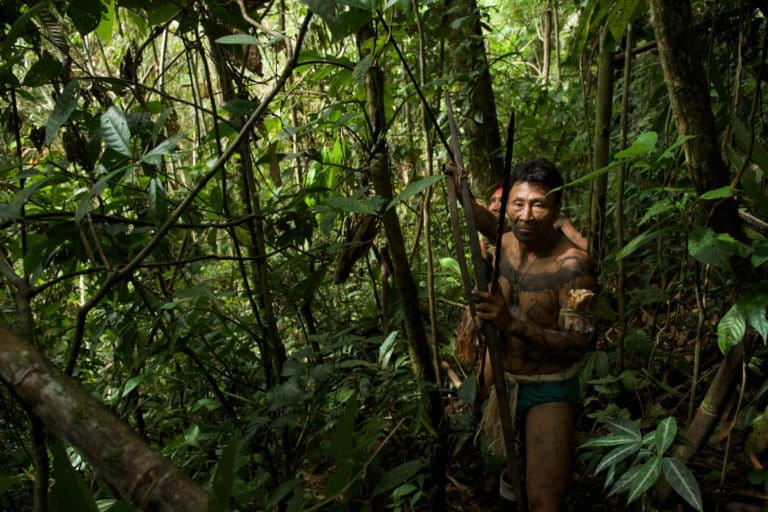
A report published by the Forest Peoples Programme (FPP) in February shows that Indigenous rights have been largely ignored or disrespected during the COVID-19 pandemic. By evaluating the state of human rights among Indigenous peoples in five tropical forest countries – Brazil, Colombia, Peru, the Democratic Republic of Congo, and Indonesia – the report’s authors discovered that impunity for logging and mining escalated, while environmental safeguards were slashed.
Governments were found to prioritize the expansion of the energy sector, infrastructure, mining and logging, and the development of industrial agriculture close to or inside Indigenous territories, while loosening oversight of land grabbing and illegal deforestation. Further, Indigenous leaders and human rights defenders have faced increased violence. In Colombia, 110 of these leaders and defenders were murdered in 2020 — 26 more than in 2019.
The report also found that while the media was largely focused on the COVID-19 pandemic, local peoples have been largely kept from their right to free, prior and informed consent on decisions that directly affect their lives.
5. Brazil court upholds ban on missionaries trying to contact isolated Indigenous people

In a bid to protect isolated and recently contacted Indigenous people against COVID-19, Brazil’s highest court upheld a ban on missionaries entering reserves on Sept. 24. According to Justice Luís Roberto Barroso, who issued the court ruling, “peoples in isolation and recent contact are the most exposed to the risk of contagion and extinction.”
Besides the risk of disease spread, activists say the presence of missionaries in these reserves undermines traditional cultures, social cohesion and compels these nomadic communities to settle down. Anthropologist Aparecida Vilaça underlines that this makes their land more vulnerable to invasions by illegal ranchers and loggers.
The decision comes in response to a lawsuit filed by Indigenous organizations against a law passed in July 2020 that allowed missionaries to remain inside these reserves despite the pandemic, in violation of Brazil’s official policy in place since 1987. President Jair Bolsonaro’s administration has pushed to “integrate” Indigenous people into society, while being cozy with the evangelical movement, something Indigenous organizations see as a threat to the country’s non-contact policy.
6. Deadly raids are latest case of abuse against Indigenous Batwa in DRC park, groups say

According to the Forest Peoples Programme (FPP), the number of attacks by security forces on Indigenous Batwa villages in the Democratic Republic of Congo’s Kahuzi-Biega National Park has tripled in the past four weeks. Eyewitness testimonies state that DRC soldiers and park rangers burned several Batwa villages to the ground, killing one man and possibly a pregnant woman, and injuring at least two other women.
According to park director De-Dieu Bya’Ombe Balongelwa, the raids were aimed at capturing armed men who had carried out an attack in the city of Bukavu, located about 40 kilometers (25 miles) from the park. However, Indigenous rights groups have demanded a formal investigation into the reports, and called on park funders to pay attention to alleged crimes committed using their money.
In the midst of these accusations, a report by a human rights organization, Initiative for Equality, released a report documenting a number of abuses occurring in and around the park since 2017. The report details violent conflicts occurring between Batwa people and park rangers.
7. Thanks to the Yurok Tribe, condors will return to the Pacific Northwest
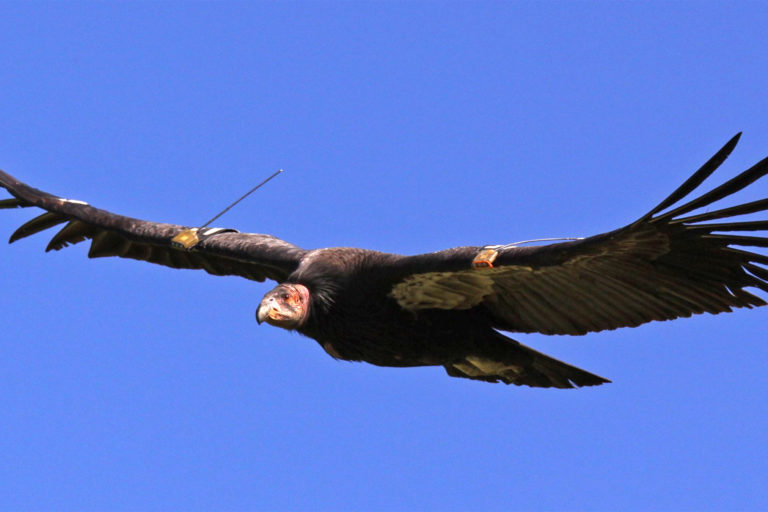
In March, the U.S. Fish and Wildlife Service finally gave the green light to the Yurok Tribe Wildlife Department’sinitiative to reintroduce the critically endangered California condor (Gymnogyps californianus) to the Redwood National and State Parks. The species nearly went extinct in the 1980s and was wiped out from the Yurok Tribe’s ancestral territory in what is now Northern California in the early 20th century. The condor is deeply tied to the community’s cultural traditions and ceremonies.
Tribal elders made the decision to bring the bird back in 2003, kicking off years of research and outreach to pave the way for the condor’s return. For the last eight years, the team worked to gather evidence on bird species’ populations and levels of pesticides in the region, while educating hunters and the general public about the condor’s reintroduction. The tribal department is currently building a pen for the four condors which will be released into the Pacific Northwest parks next spring.
“They’ll see mountains, they’ll see the coast … we’re hoping it’s a condor paradise,” said Dave Roemer, the superintendent of Redwood National and State Parks. “The largest-wingspan bird in the tallest trees is a beautiful vision.”
8. Indigenous people get less than 1% of climate funding? It’s actually worse (commentary)

In a commentary for Mongabay, Torbjørn Gjefsen, the lead author of a Rainforest Foundation Norway report, explained how little funding goes to Indigenous peoples and local communities (IPLCs) for tenure and forest management. Compared to the “less than 1%” soundbite extrapolated from the report and used during the United Nations climate summit in November, the reality is even worse. The number is well below 1%.
According to the report, funding that went to Indigenous land tenure rights and forest management was $2.7 billion over the last 10 years. This is equal to 0.74% of total development aid allocated to address climate change. Researchers further discovered that 17% of the funding to IPLC tenure and management went to projects that specifically included an IPLC organization. Thus, IPLCs and their organizations actually receive an amount equal to 0.13% of aid designated to climate change.
9. In Peru’s Amazon, deforestation and crime sweep through Indigenous communities
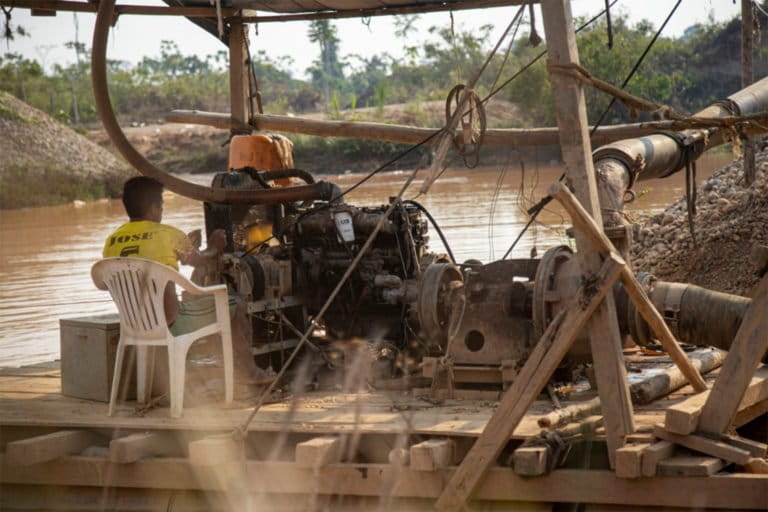
In September, Mongabay Latam completed an investigation into the territorial security of Indigenous communities in five regions of the Peruvian Amazon: Loreto, Ucayali, Pasco, Huánuco, and Madre de Dios. The team analyzed data on the legal ownership of Indigenous lands, the advance of deforestation, and the locations of coca crops and illegal mining camps in the regions. The geospatial analysts showed that 1,247 Indigenous communities have been affected. Later, the team visited the communities where the data suggested the situations were the most dire.
The study also revealed that 647 self-identified Indigenous communities in these five regions do not have official recognition from regional authorities to certify their existence and therefore obtain legal title to the land.
Communities were discovered to be surrounded by illegal mines that pollute their rivers with mercury, invading loggers, and violent drug traffickers. Between 2017 and 2019 in Ucayali, at least 16 communities lost 35,525 hectares (87,784 acres) to deforestation caused by drug trafficking and their clandestine airstrips. Seven of the 10 environmental defenders killed in the last year and a half were Indigenous leaders. Communities link the murders to invaders and drug traffickers.
10. Indigenous group faces eviction for ‘New Bali’ tourism project in Sumatra

The Indonesian government is touting the volcanic crater lake of Toba in Indonesia’s North Sumatra province as one of the country’s new tourism hubs dubbed “New Balis.” However, an Indigenous community which have long claimed the region, known as the Pomparan Ompu Ondol Butarbutar, see the area as their ancestral land, not a tourist destination. According to members of the community, they have been evicted from their homes and had their farmland destroyed to make way for the upcoming five-star hotel, luxury mall, amusement park, golf course and other facilities.
Similar to other Indigenous communities in Indonesia, the Pomparan Ompu Ondol Butarbutar’s land claims are not recognized by the state. Although they have continuously protested and tried to get their lands formally recognized, their efforts have been unanswered. In April, the community sued 12 parties, including the Coordinating Ministry of Maritime Affairs and Investment and the Ministry of Agrarian and Spatial Planning at the Balige District Court. The lawsuit is still ongoing.
The tourism project is one of several large ventures underway in North Sumatara. There are also power plant projects and a planned zinc mine near Lake Toba, some of them funded by Chinese companies.
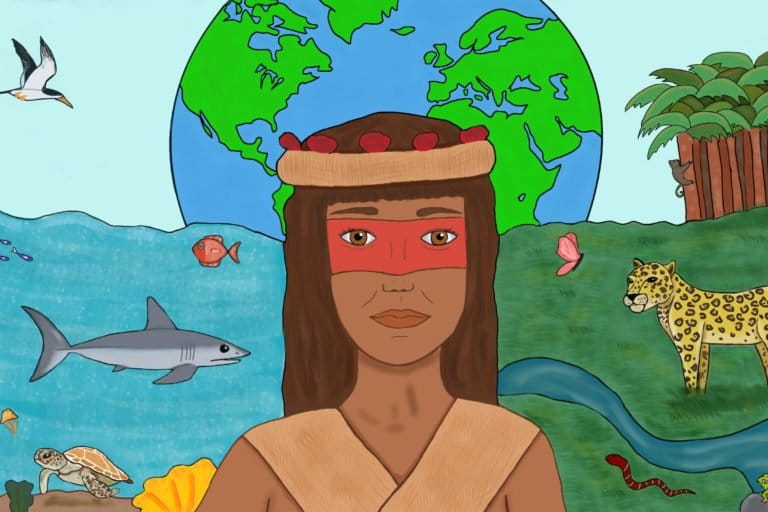
Follow Latoya Abulu on Twitter to see her latest work via @LatoyaAbulu
Banner image: Indigenous Environmental Network action against carbon markets at COP26, in Glasgow. 3 November 2021. Image courtesy of Hanae Takahashi/Friends of the Earth Japan via Flickr (CC BY-NC-ND 2.0).
Related reading: To mark Indigenous Peoples’ Day on Oct. 11, Mongabay rounded up this year’s most inspiring and impactful stories from around the world. Read here.
Related listening from Mongabay’s podcast: A conversation with Victoria Tauli-Corpuz and Zack Romo about Indigenous rights and the future of biodiversity conservation. Listen here:
FEEDBACK: Use this form to send a message to the author of this post. If you want to post a public comment, you can do that at the bottom of the page.
